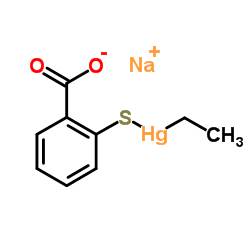Thimerosal exposure and the role of sulfation chemistry and thiol availability in autism.
Janet K Kern, Boyd E Haley, David A Geier, Lisa K Sykes, Paul G King, Mark R Geier
文献索引:Int. J. Environ. Res. Public Health 10(8) , 3771-800, (2013)
全文:HTML全文
摘要
Autism spectrum disorder (ASD) is a neurological disorder in which a significant number of the children experience a developmental regression characterized by a loss of previously acquired skills and abilities. Typically reported are losses of verbal, nonverbal, and social abilities. Several recent studies suggest that children diagnosed with an ASD have abnormal sulfation chemistry, limited thiol availability, and decreased glutathione (GSH) reserve capacity, resulting in a compromised oxidation/reduction (redox) and detoxification capacity. Research indicates that the availability of thiols, particularly GSH, can influence the effects of thimerosal (TM) and other mercury (Hg) compounds. TM is an organomercurial compound (49.55% Hg by weight) that has been, and continues to be, used as a preservative in many childhood vaccines, particularly in developing countries. Thiol-modulating mechanisms affecting the cytotoxicity of TM have been identified. Importantly, the emergence of ASD symptoms post-6 months of age temporally follows the administration of many childhood vaccines. The purpose of the present critical review is provide mechanistic insight regarding how limited thiol availability, abnormal sulfation chemistry, and decreased GSH reserve capacity in children with an ASD could make them more susceptible to the toxic effects of TM routinely administered as part of mandated childhood immunization schedules.
相关化合物
| 结构式 | 名称/CAS号 | 分子式 | 全部文献 |
|---|---|---|---|
 |
硫柳汞钠
CAS:54-64-8 |
C9H9HgNaO2S |
|
Safety review: squalene and thimerosal in vaccines.
2010-01-01 [Therapie. 65(6) , 533-41, (2010)] |
|
A transcriptome-based classifier to identify developmental t...
2015-09-01 [Arch. Toxicol. 89 , 1599-618, (2015)] |
|
Autophagy-inducing peptides from mammalian VSV and fish VHSV...
2014-09-01 [Autophagy 10(9) , 1666-80, (2014)] |
|
An analysis of cosecretion and coexpression of gut hormones ...
2015-03-01 [Endocrinology 156(3) , 847-57, (2015)] |
|
DrugBank 3.0: a comprehensive resource for 'omics' research ...
2011-01-01 [Nucleic Acids Res. 39 , D1035-41., (2011)] |